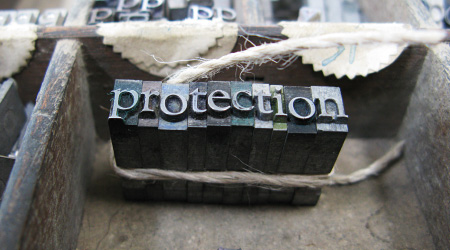What Is Overdraft Protection?

Consumer checking accounts have been in existence for a long time. During this period, technology based innovation has provided many new value-added features for checking accounts like debit cards and online bill paying. One of these benefits has been realized in the form of overdraft protection which provides a way to protect yourself financially from bounced checks.
Overdraft protection links a personal checking account with a savings account to seamlessly transfer funds in the event a check is presented which cannot be covered. Sometimes overdraft protection can be linked to a home equity line of credit or bank issued credit card from the same institution. In all scenarios however, overdraft protection is something that must be requested and authorized by the consumer prior to its implementation. Overdraft protection may be provided free of charge or incur a small monthly fee of $1 - $2. There is also normally a service charge whenever it is used when covering an outstanding check.
An example of how overdraft protection may work would be a checking account which has $500 in cash available for use and the account holder writes two checks; one check for $400 and a second check for hundred and $110. The $400 check clears because there were sufficient funds available at the time it was presented. Unfortunately, only $100 is available and then a second check is presented for $110. In most instances this will result in a $35 insufficient funds fee from your financial institution as well as a $25 return check fee if it was made out to a business. With overdraft protection however, $10 is magically moved from a linked savings account to cover the additional funds necessary to clear the second check.
The one obvious drawback to overdraft protection, besides the relevant fees, is that the linked savings account must have sufficient funds at all times to adequately cover potential checking account shortfalls. For consumers living paycheck to paycheck or who continually dip into their savings account, this may be an issue. It is possible that a checking account even with overdraft protection may still incur overdraft service fees as well as insufficient funds fees if not enough funds are available.
If you're a consumer who lives on the edge financially than the benefits may outweigh the costs. Consider a situation where multiple checks are written, one of which is for a credit card payment. Without overdraft protection, not only could the credit card payment bounce making it late but since it was to a credit card it may also adversely affect your credit history and credit score. If this happens more than once it may result in higher interest rates, a lesser ability to obtain credit and additional fees and penalty charges added to your credit card balance. All of this can ideally be avoided with overdraft protection and sufficient funds in a savings account.
Overdraft protection may not be necessary for all consumers but for those who live creatively juggle finances it may be an appropriate safety net. Insufficient fund fees and late credit card payments are much worse than an overdraft protection service charge in the scope of financial costs.
Elsewhere on StockMonkeys.com







